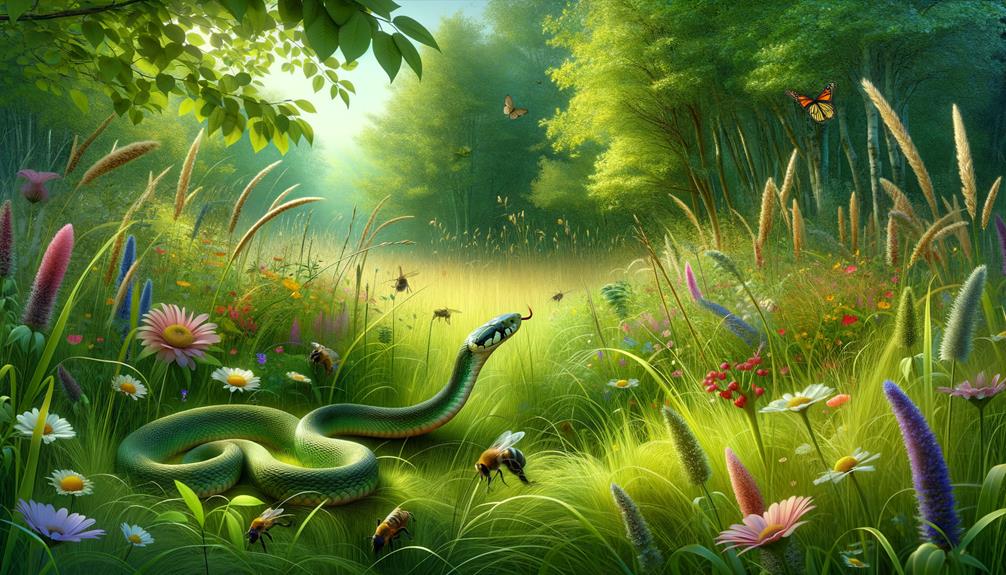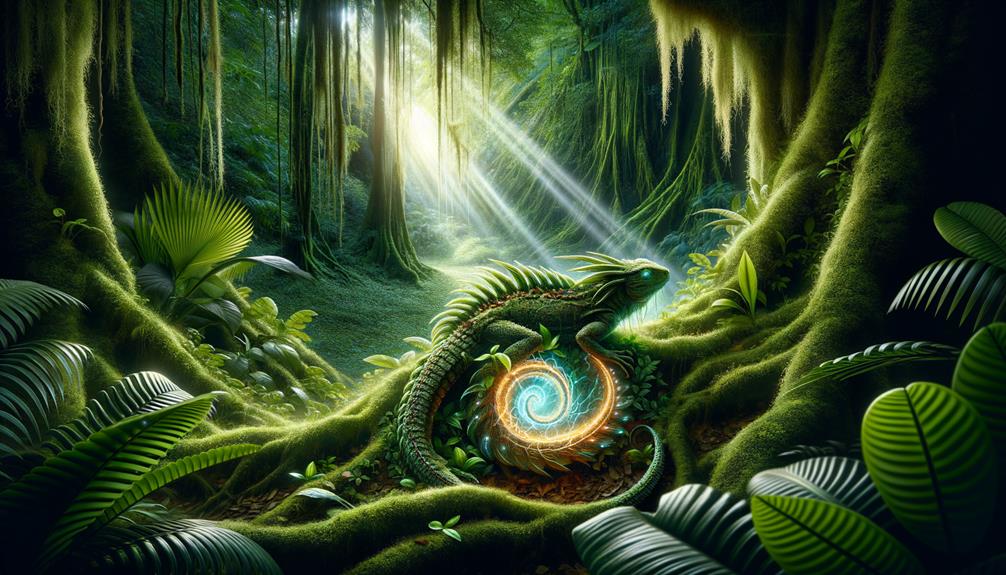Chameleons are truly remarkable creatures, particularly when it comes to their ability to change color. These lizards control special cells called melanophores, which are packed with pigment. Their color shifts are influenced by various factors including hormones, temperature, and their nervous system. Contrary to popular belief, this isn't just about blending in with their surroundings. Color changes play a crucial role in how chameleons communicate and express their moods.
The secret behind their vibrant displays lies in specialized cells known as chromatophores. These contain an array of pigments, allowing chameleons to showcase a stunning spectrum of colors. When it's chilly, they'll darken their skin to absorb more heat. Conversely, they'll lighten up to reflect sunlight when things get too warm.
It's fascinating to see how these reptiles use color to interact with their environment. There's so much more to learn about these incredible animals and their color-changing abilities. If you're curious, you might want to look into some scientific studies or nature documentaries for more information.
Mechanism of Color Change
Chameleons are masters of disguise, changing their skin color through a fascinating biological process. They control pigment-filled cells called melanophores, spreading or concentrating these pigments to create darker or lighter hues. This color-shifting ability isn't just for show; it's influenced by a complex interplay of hormones, temperature, and the chameleon's nervous system.
These reptiles are true quick-change artists, adapting to their surroundings in real-time. Their environment plays a big role in these transformations. For instance, a chameleon might darken its scales to soak up more heat when it's chilly. But it's not all about survival – emotions also trigger these colorful displays. During mating rituals or territorial disputes, chameleons often sport vivid colors, signaling their mood to others of their kind.
This remarkable ability offers a glimpse into nature's ingenuity. Chameleons exemplify how animals can adapt to their surroundings, using color as both camouflage and communication. Their color-changing prowess continues to captivate scientists and nature enthusiasts alike, offering insights into the complex relationship between biology and environment.
Role of Chromatophores
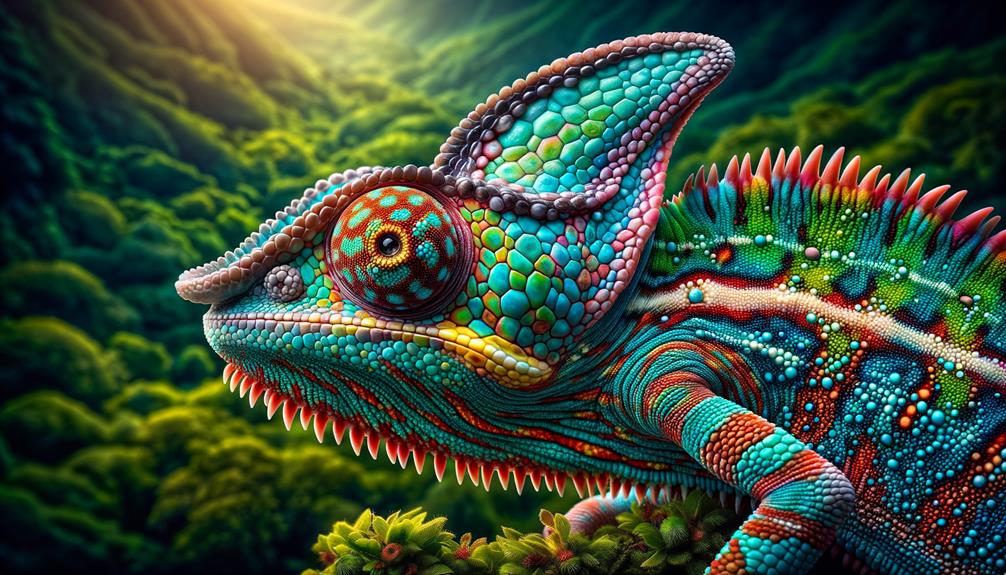
Chameleons are famous for their color-changing abilities, and the secret lies in their skin cells called chromatophores. These cells work together to create a wide range of colors, allowing chameleons to blend in, communicate, and show their feelings.
There are four main types of chromatophores in a chameleon's skin:
- Yellow cells (xanthophores): These sit on top and give the chameleon a sunny glow when they expand.
- Red cells (erythrophores): Just below the yellow ones, these cells create red and orange tones, often seen during mating or when a chameleon is angry.
- Light-reflecting cells (iridophores): Instead of holding color, these cells bounce light around, creating shimmery blues and whites.
- Dark cells (melanophores): At the bottom layer, these cells contain brown and black pigments, helping chameleons darken their skin to soak up heat or hide in shadows.
By adjusting these different cells, chameleons can create an impressive array of colors. It's a clever trick that helps them survive and thrive in their ever-changing surroundings.
This color-changing ability is more than just a neat party trick. It's a key part of how chameleons interact with their world, showing us yet another example of nature's creativity.
Temperature Regulation

Chameleons have a cool trick up their sleeves when it comes to managing their body heat. These cold-blooded critters can't generate their own warmth, so they rely on their surroundings to stay comfortable. When they're feeling chilly, their nervous system kicks into gear, prompting their skin to darken. This clever move helps them soak up more heat from their environment. On the flip side, if they're overheating, they'll lighten up to reflect sunlight and cool off.
When a chameleon's relaxed, its nervous system doesn't have to work overtime adjusting colors. This energy-saving mode helps maintain a steady temperature without much fuss. The secret lies in their skin's intricate network of color-changing cells. By expanding or shrinking these cells, chameleons fine-tune their hues and, as a result, their body temperature.
This nifty adaptation allows chameleons to thrive in all sorts of places, from shady forest floors to sunny treetops. Their ability to regulate temperature through color changes isn't just about survival – it's a testament to the fascinating complexity of their biology.
Communication Signals
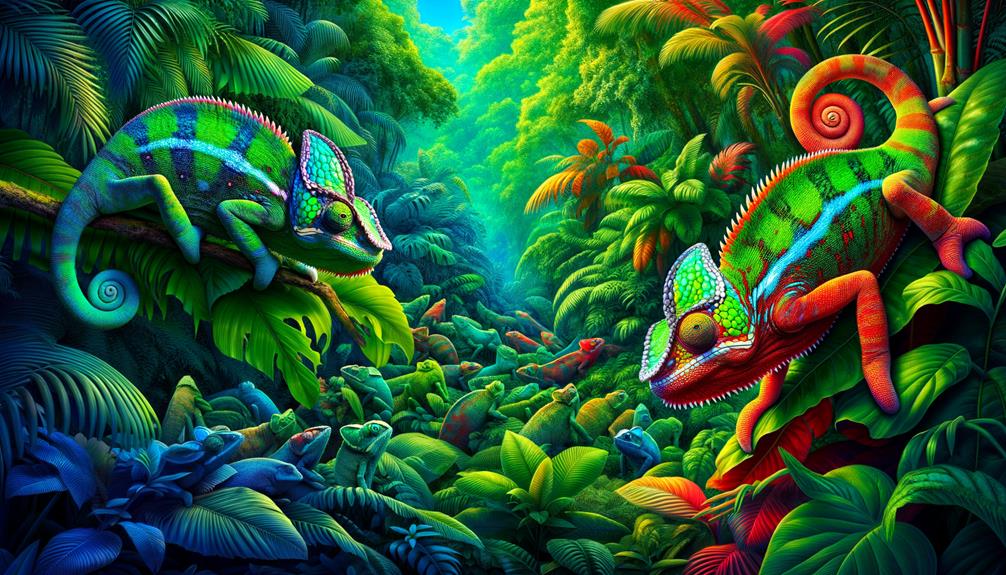
Chameleons use their color-changing abilities as a clever way to communicate. These unique reptiles can express their feelings, intentions, and social standing through vibrant displays.
The science behind this is pretty cool. Chameleons have special cells called chromatophores that contain different pigments. By expanding or shrinking these cells, they can produce a wide range of colors.
When you see a chameleon showing off bright colors, it's often trying to look tough or attract a mate. Here are four ways chameleons use color to express themselves:
- Showing aggression: They might flash bright, bold colors when they feel threatened or want to defend their territory.
- Backing down: Duller, less intense colors can signal that they're not looking for a fight.
- Flirting: Male chameleons often sport brighter hues to catch the eye of potential mates.
- Displaying health: Vivid colors usually mean a chameleon is in good shape, while pale or dull colors might indicate illness.
This complex system of color-changing gives us a fascinating glimpse into how these amazing creatures interact with their world. It's a perfect example of nature's ingenuity and adaptability.
Myths and Misconceptions
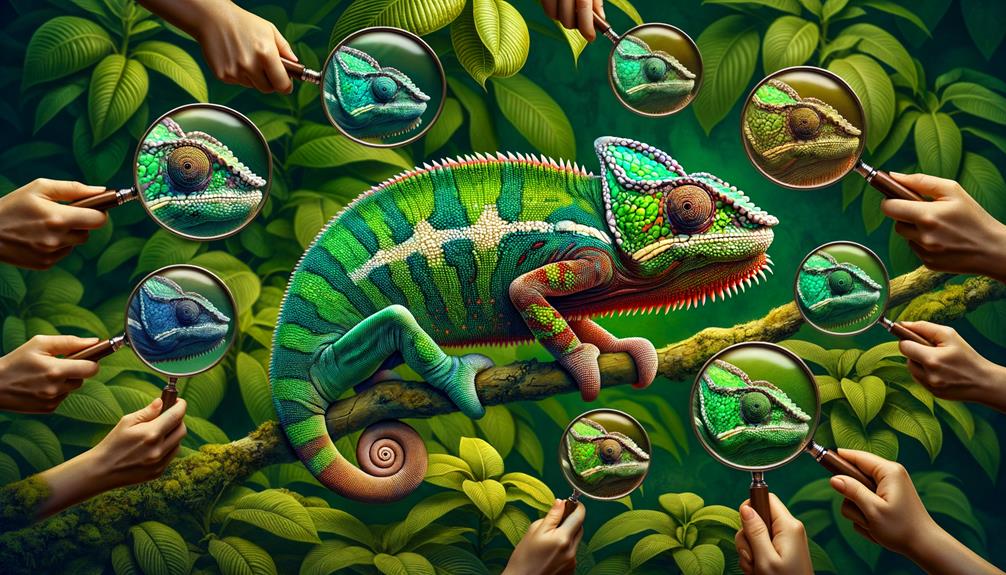
People often get it wrong about chameleons and their color-changing tricks. Let's set the record straight: these lizards don't just switch shades to hide. It's way more interesting than that.
Chameleons mostly change color to chat with each other and keep cool. When they shift hues, they're often showing off their mood, trying to catch a mate's eye, or scaring away rivals. They also use this neat trick to control their body temperature, going darker to soak up heat or lighter to stay cool.
Now, don't think these little guys can turn into perfect copycats of their surroundings. That's just not how it works. Their color shifts depend on things like light, temperature, and how they're feeling. Sure, they might blend in a bit, but the idea that they can disappear against any background? That's just a tall tale.
What's really going on is pretty cool science stuff. They've got special cells called chromatophores and iridophores. These cells are packed with different pigments and can bounce light around in funky ways. It's like having a built-in mood ring and thermostat all rolled into one scaly package.
Frequently Asked Questions
How Does a Chameleon Know to Change Color?
Chameleons have always intrigued me with their color-changing ability. It's not magic, but rather a sophisticated interplay of hormones and nerve signals. These lizards respond to their surroundings and feelings, adjusting their hues accordingly. This remarkable trait helps them adapt and flourish in various environments. The process involves specialized cells in their skin that expand or contract, revealing different pigments. It's a testament to nature's ingenuity, allowing chameleons to communicate, regulate body temperature, and even camouflage themselves when necessary. Understanding this mechanism gives us a glimpse into the complex world of animal adaptation and survival strategies.
What Factors Determine a Chameleon's Color Change?
Chameleons' color-changing ability stems from several factors, including their emotional state, surrounding temperature, and light conditions. The process involves specialized skin cells called chromatophores, which expand or contract to produce various vibrant shades. These changes often reflect the animal's environment and internal state. It's remarkable how these reptiles can shift their appearance so dramatically, adapting to their surroundings and communicating with others of their species through visual cues.
What Are 5 Interesting Facts About Chameleons?
Chameleons are nature's living canvases, constantly transforming their appearance. These reptiles change hues quickly, not just to blend in, but to express their feelings and assert dominance. Each species boasts its own unique color range, adding to their charm. Surprisingly, chameleons can perceive ultraviolet light, a ability that humans lack. The science behind their color-changing prowess lies in special cells containing tiny crystals that reflect light differently as they rearrange. It's a reminder of how intricate and awe-inspiring the natural world can be.
What Is the Advantage of Changing the Color of a Chameleon?
Chameleons' color-changing ability is a remarkable survival tactic. This skill serves multiple purposes: it helps them communicate, control their body temperature, and camouflage themselves. By blending into their surroundings, chameleons can effectively hide from predators and sneak up on unsuspecting prey. This adaptive feature gives them a significant edge in the wild, allowing them to thrive in various environments. The chameleon's color-shifting prowess is more than just a neat trick; it's a vital part of their daily life, helping them navigate the challenges of their habitat with impressive efficiency.
Are Chameleons the Only Animals That Change Color?
Turns out chameleons aren't the only color-changing creatures in the animal kingdom. A surprising number of species can alter their appearance, including octopuses, squids, and cuttlefish. Some fish, frogs, lizards, and snakes also have this nifty trick up their sleeves. These animals use special cells in their skin to adapt to their surroundings, blending in or standing out as needed. It's a fascinating ability that helps them survive in various environments, whether they're trying to hide from predators or sneak up on prey.


